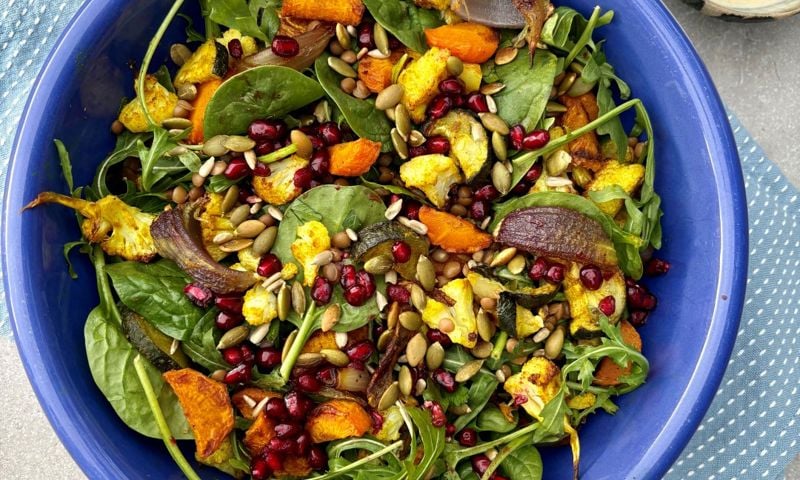Meal planning doesn’t have to be hard or complicated. By following a few key steps, you can set yourself up for success and start reaping the benefits.
Key benefits of meal planning
There are many benefits to planning out your meals:
- Saves time: by planning for the week ahead, you won’t find yourself in the supermarket every day. So you have more time to do the things you love.
- Less stress: rather than trying to think about what is for dinner when you are already hungry, it is all planned out for you.
- Saves money: pre-planning means you don’t end up buying more groceries than you need for the week.
- Eliminates waste: know exactly how much of each ingredient you need for the week, so you don't buy excess that will go to waste.
- Helps to lose weight: saves you from grocery shopping while you are hungry or having cravings – you can plan a week of healthy meals ahead of time.
- Get all the nutrients you need across the week: when planning out the week you can make sure you have a variety of different protein sources, vegetables, fruits and grains in your diet.
Planning for the week ahead
There are some key factors to consider when deciding what recipes to cook for the week ahead.
- Think about a range of protein sources to include through the week: depending on dietary preferences, make sure you include a variety of red meat, fish, chicken, and tofu, legumes and egg-based meals.
- Factor in your busy days: if you have activities on after work or for the kids after school, or and you know you’ll be shorter on time that night, make sure you choose a quick and simple recipe to cook.
- Consider your exercise: if you do resistance training, these are the days you might need a little more protein, and if you have a day that is fairly inactive, make sure you aren’t over-eating.
- Make one night of the week ‘kids choice’. Kids love it when they get the power to choose the meal for the night. Have a list of easy make meals that you can allow them to choose from. Keep it simple with options like canned tuna with pasta, fish fingers, baked beans on toast or scrambled eggs.
Create a recipe bank
This is a great way to avoid falling in a rut and eating the same recipes week after week. This super handy tool will make meal planning a breeze.
- Firstly, gather some sticky notes and a notebook.
- Identify a list of your favourite ‘go to’ recipes you tend cook often during the week. The aim is to try and create a list of around 8-10 from each protein category (for example, chicken, red meat, vegetarian, fish).
- Stack the sticky notes in your notebook on top of each other so there is some overlapping space to write the name of the recipe at the end of the note.
- Order the sticky notes based on the types of meals they are, for example, they might be listed in terms of the protein used, but you might also have a list for ‘quick and easy’ meals or ‘slow cooker’ meals.
- On the main part of the sticky note, list the ingredients required for the recipe (don’t worry about amounts). This will make it easier to write your grocery list each time you want to cook that recipe!
Collate all your recipes in one spot
So many of us have favourite recipes saved all over the place – some saved as bookmarks on your web browser, Pinterest, Instagram, flagged in recipe books or written down. Then, when you go to make the recipe, you can’t find it!
To avoid this problem, choose one main area you wish to store your recipes and make sure they can be tagged (for example, it may be tagged chicken, beef, vegetarian, fish). Some great apps to save recipes in are Paprika and Evernote.
Need more help?
A dietitian or nutritionist can help with meal planning to assist you to achieve your nutrition goals. A good place to start is with your GP, who can refer or advise on diet and health.
Feeling inspired? Check out our yummy healthy recipes.



